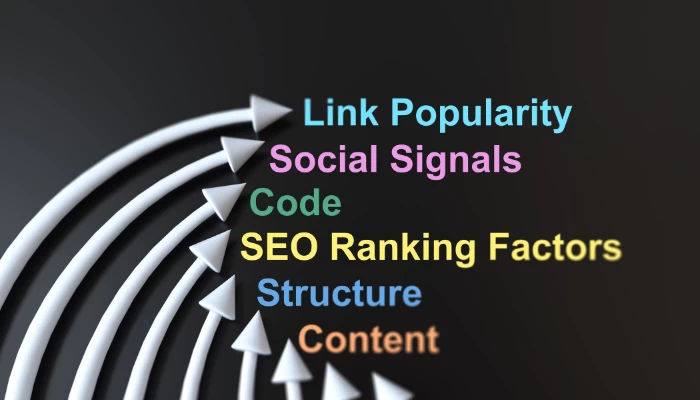The Power of SEO Credibility | Local Pro1’s Guide to Success
The Power of SEO Credibility | Local Pro1's Guide to Success
SEO credibility refers to the perceived trustworthiness and authority of a website in the eyes of search engines and users. It encompasses various factors such as relevance, reliability, and quality of content, as well as the website’s reputation and adherence to SEO best practices. It reflects how well a website meets the criteria set by search engines for ranking high in search results and how much users trust the information provided.

Understanding SEO Credibility
SEO credibility refers to the trustworthiness and authority of a website or webpage in the eyes of search engines like Google.It has an immediate effect on a website’s position in search engine results pages (SERPs), which in turn influences how visible the website is to those looking for pertinent information.
Why is SEO Credibility Important?
Impact on Search Engine Rankings:
Search engines like Google prioritize highly credible websites when displaying search results. Credibility is assessed through various factors such as quality of content, backlink profile, user experience, and adherence to SEO best practices. Websites that demonstrate credibility are more likely to rank higher in search engine results pages (SERPs), leading to increased visibility and organic traffic. By establishing credibility through SEO techniques, websites can improve their chances of being found by potential customers or audiences searching for relevant information or products. Local Pro1 provides the best service related to SEO Credibility.
Trust Building with Audience:
When users find your website at the top of search results or prominently featured, they are more likely to perceive it as a reliable source of information or a reputable business. Trust is built over time through consistently delivering valuable content, positive user experiences, and transparent communication. In addition to increasing your website’s exposure, SEO credibility optimization conveys to visitors that your website is reliable, which may increase user engagement, conversion rates, and loyalty.
How to Build SEO Credibility

Building SEO credibility involves various strategies, and content quality and relevance play a crucial role. Here’s how you can enhance SEO credibility through content:
Creating High-Quality Content:
Originality: Ensure your content is unique and offers value to your audience. Avoid duplicating content from other sources.
Accuracy: Fact-check your content to ensure the information provided is accurate and up-to-date. Inaccurate information can harm your credibility.
Engagement: Aim to create content that resonates with your audience and encourages interaction, such as comments, shares, and likes.
Visual Appeal: Incorporate visuals like images, infographics, and videos to enhance the visual appeal and user experience of your content.
Readability: Write clearly and concisely, using proper grammar and structure. Break up long paragraphs and use headings, bullet points, and lists to improve readability.
Optimizing Content for Keywords and Intent:
Keyword Placement: Incorporate your target keywords naturally throughout your content, including in titles, headings, meta tags, and body text. Avoid keyword stuffing, which can harm user experience and SEO.
Intent Optimization: Understand the search intent behind specific keywords and create content that aligns with that intent. Whether it’s informational, navigational, transactional, or commercial investigation, tailor your content accordingly.
User Experience: Ensure your content provides a seamless user experience across devices. This includes optimizing for mobile devices, improving page load times, and making navigation intuitive.
Technical SEO:
Technical SEO refers to optimizing a website’s infrastructure and elements to enhance its visibility and ranking in search engine results. Two crucial aspects of technical SEO are:
Website Performance and Speed:
This involves ensuring that your website loads quickly and efficiently. Slow-loading websites can lead to poor user experience and may result in higher bounce rates, negatively impacting your search engine rankings. To improve performance and speed, consider the following:
- Optimize images and other media files to reduce file sizes without sacrificing quality.
- Minimize HTTP requests by combining CSS and JavaScript files, and reducing unnecessary elements on your pages.
- Leverage browser caching to store static resources locally on visitors’ devices, reducing server load and load times for returning visitors.
- Use a Content Delivery Network (CDN) to distribute your website’s content across multiple servers worldwide, reducing latency and improving load times for users in different geographic locations.
- Compress text files using gzip or other compression methods to reduce file sizes and improve download times.
- Regularly monitor website performance using tools like Google’s PageSpeed Insights or GTmetrix, and address any issues identified to continually optimize speed and performance.
Mobile-Friendliness and Responsiveness:
With an increasing number of users accessing the internet via mobile devices, websites need to be mobile-friendly and responsive. Mobile-friendly websites provide an optimal viewing and interaction experience across a wide range of devices, including smartphones and tablets. To ensure mobile-friendliness and responsiveness:
- Implement a responsive web design that automatically adjusts the layout and content of your website based on the user’s device and screen size.
- Use mobile-friendly navigation and design elements that are easy to interact with on touchscreens, such as larger buttons and text.
- Ensure that text is legible and content is easily readable without the need for zooming or horizontal scrolling on mobile devices.
- Optimize images and other media for mobile devices to reduce load times and improve performance.
- Test your website across various mobile devices and screen sizes to identify and address any issues with layout, functionality, or performance.
- Utilize Google’s Mobile-Friendly Test tool to assess your website’s mobile-friendliness and identify areas for improvement.
Earning High-Quality Backlinks:
Building a robust backlink profile is crucial for enhancing your website’s authority and search engine rankings. Here are some effective strategies to earn high-quality backlinks:
Create Exceptional Content: Craft valuable, engaging content that naturally attracts links from other websites. Whether it’s informative articles, insightful infographics, or entertaining videos, compelling content is the cornerstone of successful link-building.
Outreach and Networking: Reach out to relevant websites, influencers, and bloggers in your niche to establish mutually beneficial relationships. Offer them valuable content or collaborate on projects that can earn you backlinks.
Guest Blogging: Contribute guest posts to reputable websites within your industry. This not only helps you showcase your expertise but also earns you quality backlinks from authoritative sources.
Broken Link Building: Identify broken links on high-authority websites and offer your content as a replacement. It’s a win-win situation where you help them fix their broken links while earning a backlink in return.
Utilize Social Media: Promote your content across various social media platforms to increase its visibility and attract organic backlinks from users who find it valuable.
Monitor Competitors: Analyze the backlink profiles of your competitors to identify potential link opportunities. If they have earned backlinks from certain sources, there’s a good chance you can too.
Monitoring and Managing Backlink Profile:
Maintaining a healthy backlink profile involves continuous monitoring and management. Here’s how you can effectively manage your backlinks:
Use Backlink Analysis Tools: Leverage tools like Ahrefs, Moz, or SEMrush to regularly monitor your backlink profile. These tools provide insights into new backlinks, lost links, and overall backlink health.
Disavow Toxic Links: Periodically review your backlinks to identify any toxic or spammy links that could harm your website’s reputation. Use Google’s Disavow Tool to request Google to ignore these harmful links.
Anchor Text Optimization: Diversify your anchor text to avoid over-optimization and potential penalties from search engines. Aim for a natural mix of branded anchors, partial match anchors, and generic anchors.
Monitor Link Quality: Assess the quality of backlinks by considering factors like domain authority, relevance, and trustworthiness of the linking domain. Focus on acquiring links from authoritative and reputable sources.
Regular Audits: Conduct regular audits of your backlink profile to ensure compliance with search engine guidelines and identify any potential issues that need to be addressed promptly.
User Experience:
User Experience (UX) plays a crucial role in ensuring that a website or application meets the needs and expectations of its users. Two key aspects of UX are Navigation and Accessibility, as well as Engaging and Informative Design.
Navigation and Accessibility: Navigation refers to the ease with which users can move around and find what they’re looking for within a website or application. Accessibility, on the other hand, focuses on ensuring that all users, including those with disabilities, can access and use the platform effectively. Here are some considerations for optimizing navigation and accessibility:
Clear Structure: Organize content logically and hierarchically, making it easy for users to understand where they are and how to navigate to different sections.
Intuitive Menus: Use clear and concise labels for navigation menus, dropdowns, and links. Ensure that they are easily accessible and consistent across all pages.
Search Functionality: Implement a robust search feature that allows users to quickly find specific content or products within the site.
Responsive Design: Ensure that the website or application is responsive and adapts seamlessly to different screen sizes and devices, making it accessible to users on mobile devices as well as desktops.
Keyboard Accessibility: Enable keyboard navigation so that users can navigate through the site without relying solely on a mouse or touch screen.
Alt Text for Images: Provide descriptive alt text for images to assist users who rely on screen readers to access content.
Color Contrast: Use high contrast between text and background colors to improve readability, especially for users with visual impairments.
Accessible Forms: Ensure that forms are easy to fill out and include labels and instructions that are clear and easy to understand. Use error messages that indicate what went wrong and how to correct it.
Testing with Assistive Technologies: Regularly test the website or application with screen readers, keyboard navigation, and other assistive technologies to identify and address accessibility issues.
Engaging and Informative Design:
The engaging and informative design focuses on creating a visually appealing and compelling user experience that keeps users interested and informed. Here are some tips for achieving this:
Visual Hierarchy: Use a clear visual hierarchy to highlight important content and guide users’ attention to key elements such as calls-to-action, featured products, or important information.
Compelling Visuals: Incorporate high-quality images, videos, and graphics that not only enhance the aesthetic appeal of the site but also help convey information and tell a story.
Consistent Branding: Maintain consistent branding elements such as colors, fonts, and imagery across all pages to reinforce brand identity and create a cohesive experience.
Interactive Elements: Integrate interactive elements such as sliders, carousels, accordions, and interactive infographics to make the user experience more dynamic and engaging.
User-Friendly Content: Present content in a format that is easy to digest, such as bullet points, numbered lists, and short paragraphs. Use headings and subheadings to break up long blocks of text and improve readability.
Personalization: Tailor the user experience based on user preferences, behavior, and demographic information to make the experience more relevant and engaging.
Feedback and Social Proof: Incorporate user reviews, ratings, testimonials, and social media feeds to provide social proof and build trust with users. Encourage user feedback and engagement through comments, reviews, and surveys.
Performance Optimization: Optimize page load times and minimize distractions to ensure a smooth and seamless user experience. Remove unnecessary clutter and streamline the design to focus on what matters most to the user.
Benefits of SEO Credibility

Improved Search Engine Rankings:
Higher Visibility in Search Results: By enhancing the credibility of your website through SEO practices, you increase the likelihood of your pages appearing higher in search engine results pages (SERPs). This elevated visibility makes it easier for users to find your website when searching for relevant keywords or topics.
Increased Organic Traffic: Organic traffic refers to visitors who find your site through unpaid search results rather than through advertisements. By consistently applying SEO services to boost credibility, you can attract a larger audience of potential customers or readers to your website.
Trust and Authority:
Establishing authority in a niche and building trust with an audience are crucial aspects of any endeavor, especially in fields where expertise and credibility are paramount. Here’s a breakdown of each:
Establishing Authority in a Niche:
Expertise Demonstration: Consistently showcase your knowledge and expertise in your niche through various channels such as blog posts, articles, social media content, webinars, podcasts, or speaking engagements.Content Quality: Produce high-quality, informative content that provides value to your audience. This could include in-depth analyses, case studies, research findings, or practical tips and advice.
Credentials and Certifications: Highlight any relevant credentials, certifications, or qualifications you possess in your niche. This adds credibility and reassures your audience of your expertise.
Networking: Network with other professionals and influencers in your niche. Collaborating with established figures can help boost your authority through association.
Consistency: Consistently engage with your audience and maintain a regular presence in your niche. This helps establish your credibility over time and keeps you top of your mind among your audience.
Building Trust with Audience:
Transparency: Share behind-the-scenes glimpses, admit mistakes when they occur, and communicate openly about your processes and decisions.Authenticity: Authenticity is key to building trust. Be genuine in your communication and portray yourself as relatable and approachable. Avoid overly promotional or sales-driven language.
Customer Reviews and Testimonials: Showcase positive reviews and testimonials from satisfied customers or clients. Social proof is a powerful tool for building trust, as it demonstrates that others have had positive experiences with your products or services.
Consistent Branding: Maintain consistent branding across all your channels to reinforce your credibility and professionalism. This includes your website, social media profiles, email communications, and any other touchpoints with your audience.
Responsive Customer Support: Provide prompt and helpful customer support to address any inquiries or concerns from your audience. A responsive and attentive approach to customer service goes a long way in building trust and loyalty.
Resilience to Algorithm Changes:
In the dynamic landscape of digital platforms and technology, resilience to algorithm changes is paramount for long-term sustainability. This involves maintaining a flexible approach to content creation and distribution, staying informed about evolving algorithms, and adapting strategies accordingly. Diversifying content formats and platforms can help mitigate the impact of algorithmic shifts. Additionally, cultivating a loyal audience base through authentic engagement and quality content can provide a buffer against fluctuations in visibility caused by algorithm updates.
Sustainable Growth and Success:
More than merely quick growth or temporary gains are needed to achieve lasting growth and success.In order to reduce their negative impact on the environment and society, companies and organizations should prioritize adding value for all parties involved. This could entail putting into practice environmentally friendly corporate procedures, welcoming innovation to cut down on waste and resource consumption, and encouraging inclusive growth that helps communities. Positive effect and long-term success can result from putting long-term sustainability ahead of short-term earnings.
Conclusion
SEO credibility is a critical aspect of any online presence. Building and maintaining credibility in search engine optimization (SEO) involves a combination of factors such as high-quality content, relevant keywords, backlinks from reputable sources, website performance optimization, and adherence to search engine guidelines. Feel free to contact us for any type of query service related to SEO Credibility.
FAQs
What Is Seo Credibility?
SEO credibility refers to the perceived trustworthiness and authority of a website in the eyes of search engines and users. It’s a measure of how reliable and reputable a site is considered within the context of search engine optimization (SEO).
How Is Seo Credibility Different From Seo Ranking?
While SEO ranking refers to the position of a website in search engine results pages (SERPs), SEO credibility focuses on the trustworthiness and authority of a website. While high SEO credibility can positively influence ranking, they are not directly interchangeable terms.
What Factors Contribute To Seo Credibility?
Several factors contribute to SEO credibility, including high-quality and relevant content, backlinks from reputable sources, a positive user experience (UX), website security (HTTPS), site speed, mobile-friendliness, domain age, and social signals.
Why Is Seo Credibility Important?
SEO credibility is important because it affects a website’s visibility and trustworthiness online. Websites with high credibility are more likely to rank higher in search engine results, attract organic traffic, and gain trust from users, leading to increased conversions and business success.
How Can I Improve My Website’s Seo Credibility?
You can improve your website’s SEO credibility by creating high-quality, relevant content that provides value to users, acquiring backlinks from authoritative websites, optimizing your website for speed, ensuring mobile-friendliness, implementing HTTPS security, engaging with your audience on social media, and consistently monitoring and improving your website’s performance.
